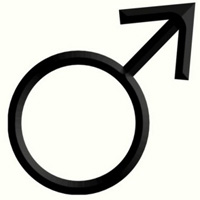Erectile dysfunction and testosterone levels prior to COVID-19 disease: What is the relationship?

Accepted: October 9, 2021
All claims expressed in this article are solely those of the authors and do not necessarily represent those of their affiliated organizations, or those of the publisher, the editors and the reviewers. Any product that may be evaluated in this article or claim that may be made by its manufacturer is not guaranteed or endorsed by the publisher.
Authors
Objective: We aimed to investigate the relationship between COVID-19 and Erectile Dysfunction (ED) and the effect of serum testosterone level on the disease prognosis.
Methods: Between April-December 2020, 70 patients who were admitted with a complaint of ED after having COVID-19 and whose serum testosterone level was checked for varicocele, premature ejaculation, and infertility reasons before COVID-19. The patients filled the International Index of Erectile Function (IIEF-5) and their testosterone level was checked. The questionnaire was arranged to assess the first month before COVID-19 and after COVID-19. Testosterone levels of the patients before and after COVID-19 were compared. The relationship between testosterone levels and hospitalization in the intensive care was evaluated.
Results: It was revealed that testosterone levels and IIEF-5 scores after COVID-19 in all patients were statisticaly and significantly different compared to the period before COVID-19 (p < 0.05). Testosterone levels of patients in need of intensive care were significantly higher than those without any need of intensive care (p < 0.05).
Conclusions: Our study has presented that COVID-19 may cause ED and high testosterone levels increase the rate of hospitalization in the intensive care by intensifying the disease.
How to Cite
PAGEPress has chosen to apply the Creative Commons Attribution NonCommercial 4.0 International License (CC BY-NC 4.0) to all manuscripts to be published.

 https://doi.org/10.4081/aiua.2021.4.460
https://doi.org/10.4081/aiua.2021.4.460



